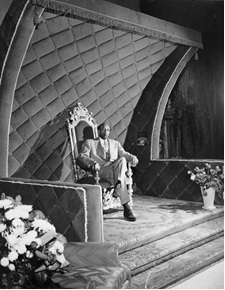Whiteness: Deconstructed
Written by Nat Illumine
Introduction
The construct of race has been a defining feature of the modern world since the sixteenth century, a form of categorisation that has impacted the entirety of the world’s population through its distinctions between white and non-white peoples based upon their global origins. Despite the fact that it is a social construct lacking any form of genetic evidence, thoroughly refuted in biological terms, whiteness as a form of political dominance has been amazingly adept at retaining its power over the last four centuries.
This month Afropean will publish a series of essays on the topic of whiteness written by our editor Nat Illumine. These essays will examine how and through what means the notion of whiteness has retained its power, through an interrogation into the concept of whiteness, to show how it has always been a historically and temporally contingent idea, rather than something fixed in eternity, which has been politically utilised to concentrate hegemony and maintain dominance in the hands of the few, through a powerful ideology that has permeated modern human existence in ways that continue to impact all of humanity today.
Whiteness in this context can be defined as a set of linked dimensions: an identity inhabited by those whose skin colour approximates it; a set of cultural practices originating in the West; and a racialized location of structural power, advantage and privilege. The study of whiteness is critical and is increasingly important for understanding the political, economic and social realities of the 21st century on a global scale. The focus of these essays will be on the British and North American (US) contexts, given the current geopolitical climate of Brexit in the UK and Trump’s presidency in the US. Although the term is problematic, ‘the West’ will be used generically to refer to Europe and North America throughout these essays. The (similarly problematic) terms ‘whites’ and ‘non-whites’ will also be used throughout for brevity, with ‘non-whites’ referring to all people whose skin colour is not identified as white.

In part one, the ways in which whiteness has been naturalised in the West through everyday cultural practices and representations through the media and the arts will be examined, investigating how, along with modern concepts of universalism and individualism, this has enabled the reproduction of its dominance and privilege.
Part two will assess which groups have been included and excluded in the category of whiteness at different historical junctures, and why, showing how instabilities in the construction of whiteness have worked to retain its power.
Part three examines the creation of the white working class as an oppressed group in the UK and how this has fuelled right-wing political mobilisation in defence of its assumed dominance.
Part four will focus on contemporary understandings of white privilege and white fragility and how white people can navigate an antiracist white position through which to mediate race and racism in the lives of those around them, as well as making suggestions for a national antiracism project.
In the final section, the academic discipline of ‘whiteness studies’ will be explored, looking at what purpose this discipline can serve and to whose ends, and what its benefits and limitations might be. This section will also draw together the previous parts in a conclusion.
The aim of these essays is to open up a discussion about the many facets of whiteness that continue to uphold white dominance and privilege, and what can be done by academics, activists, educators and others to disrupt these mantles of white power. As Richard Dyer nobly and optimistically states in his 1997 book White, the overall aim is to ‘see whiteness, see its power, its particularity and its limitedness, put it in its place and end its rule’.
NEXT: The invisibility of whiteness


